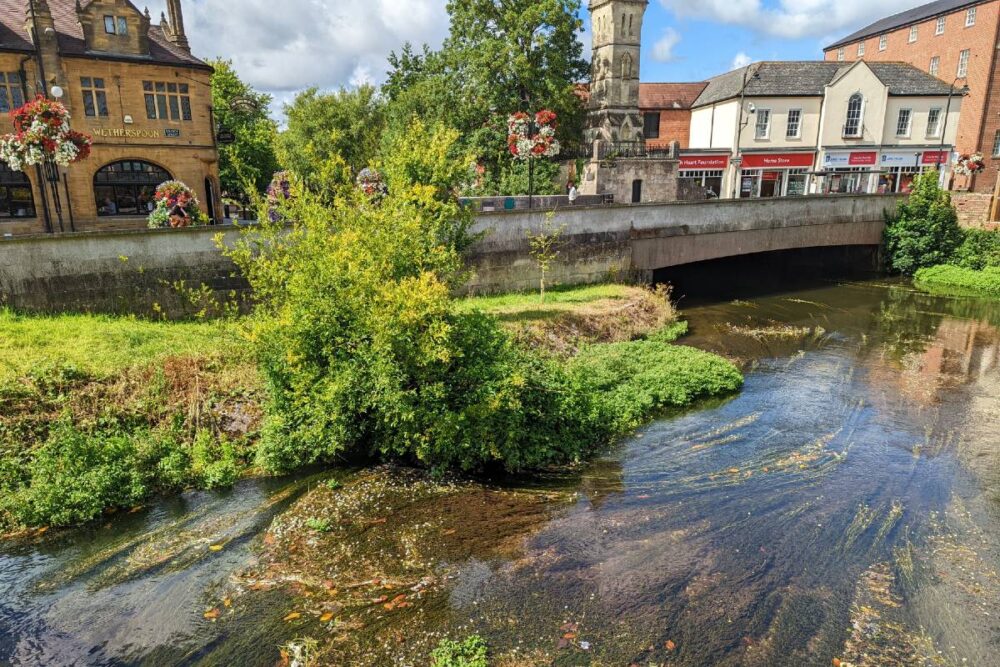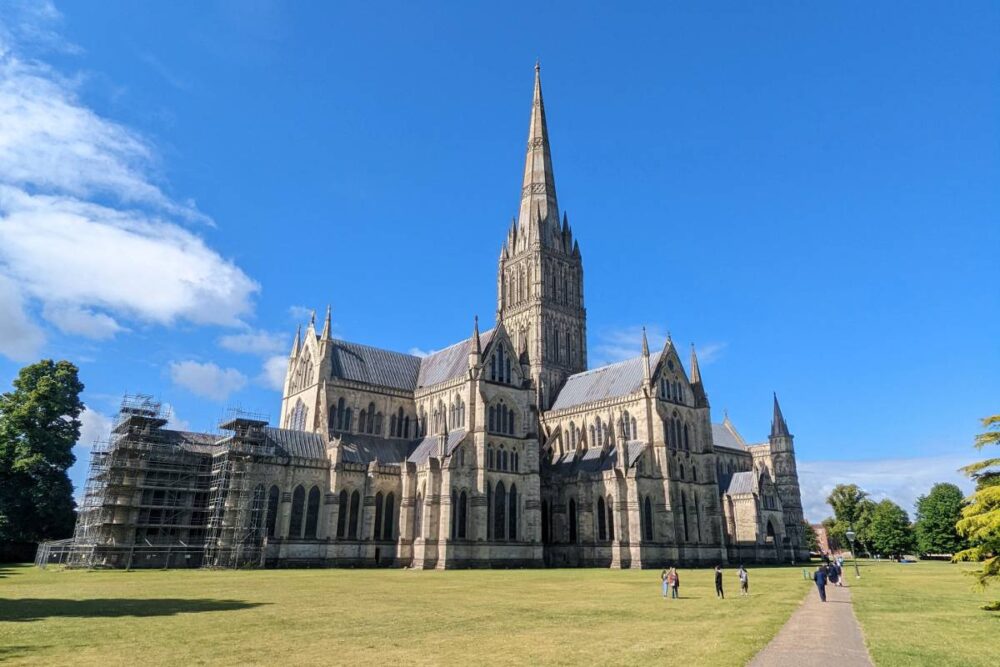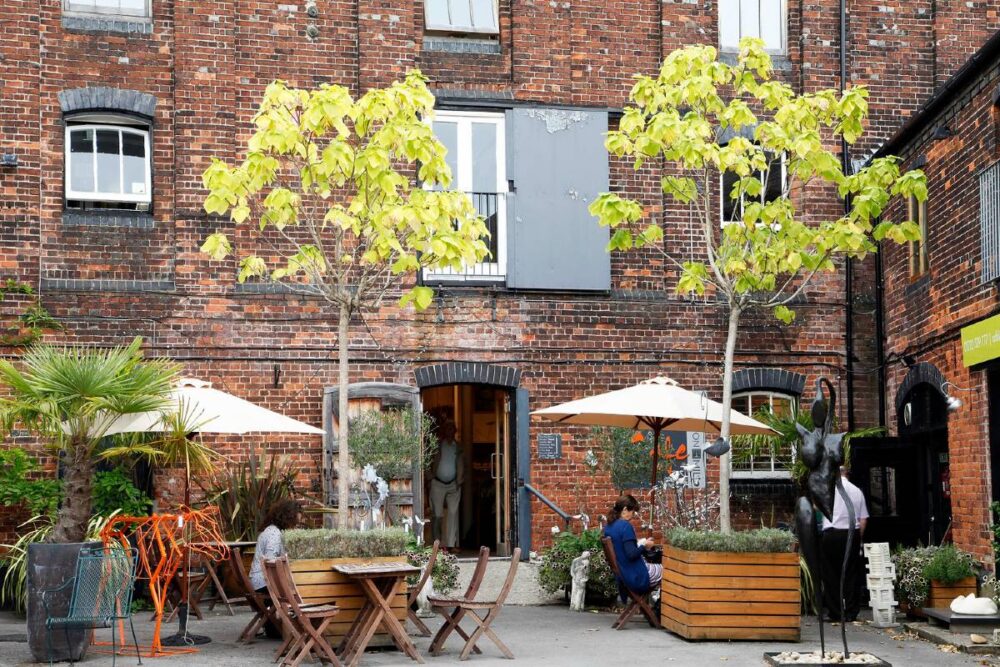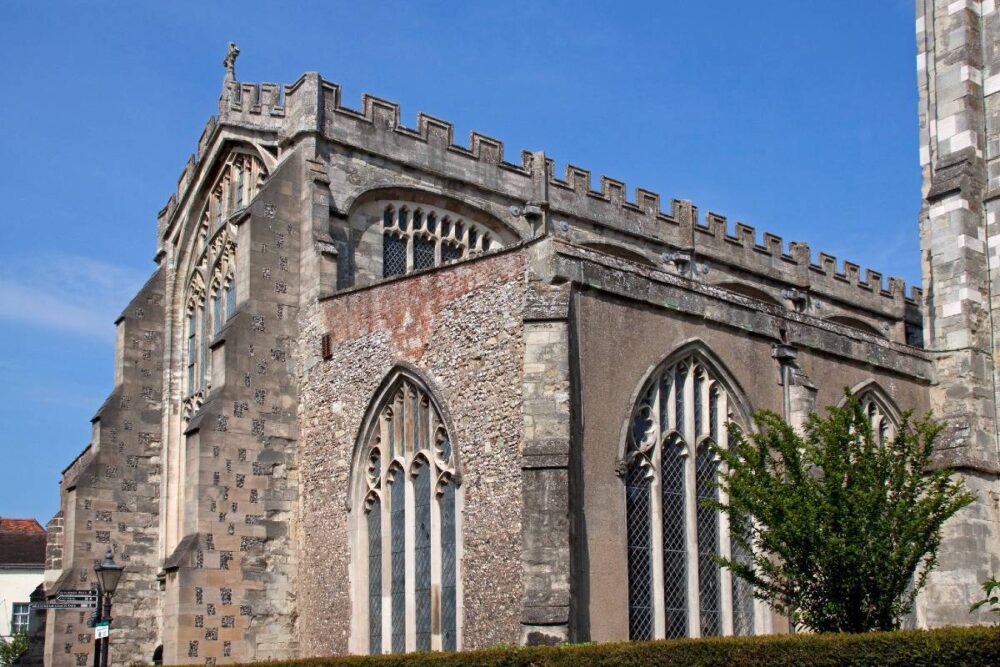In South West England, where the rivers Avon, Nadder, and Bourne meet, sits the quaint cathedral city of Salisbury. Often visited as part of a trip to nearby wonders, Salisbury itself offers plenty of history and unique experiences.

The River Avon flows freely through Salisbury (Photo: Michael C. Upton for TravelMag)
Named New Sarum when it received its city charter in 1227, it was later renamed Salisbury. Located nine miles south of Stonehenge, Salisbury’s monuments also bear testament to the region’s past. The cathedral, and the stone buildings of the surrounding close, remain intact and unharmed by progress and the tides of war. The city never became connected to a large canal system and even today the closest motorway ends at the Cadnam Interchange, 16 miles away, allowing the unique preservation of a medieval town.
On the edge of the cathedral close, visitors stroll past historic sites such as the school – where Nobel Prize Winner William Golding resided as schoolmaster from 1945-1962 – through 13th-century arched gateways and on into town. Avenues like High Street and Butcher’s Row are modern delights for shoppers and foodies. Salisbury is the perfect mix of modern and historic, which generates many unique things to do.

The 403-ft. spire of Salisbury Cathedral was added in 1320 (Photo: Michael C. Upton for TravelMag)
Visit the middle ages at Salisbury Cathedral
The heart of Salisbury is the 13th-century cathedral, which is the foundation of the city’s design. Desiring a more impressive focal point on the horizon, church elders called for a reconstruction of the place of worship from its original location in Old Sarum, two miles north. A consummate example of early English Gothic architecture, the building’s main body was constructed from 1220 to 1258. The 403 ft. spire was erected in 1320. Visitors come to appreciate the architecture, hear the 14th-century clock toll, and view an original copy of the Magna Carta. The cathedral is a working place of worship and advance tour reservations are recommended.
Walk the Avon Valley Path
Visitors looking to take in the Wiltshire countryside can set out from Salisbury on the Avon Valley Path, a 34-mile walking route following the River Avon to Christchurch Priory. The Hampshire County Council has marked the trail with green arrows, which feature a silhouette of a stone bridge. The entire route is divided into five segments. Daytrippers of moderate walking ability can complete the Salisbury to Downton section in under four hours; the distance is 8 miles. Look for the start of the path at the Walking Madonna statue at the Salisbury Cathedral. By leaving the close through the South Gate, walkers cross the Avon at Harnham Bridge.

Fisherton Mill features work from more than 200 artists (Photo: Courtesy visitwiltshire.co.uk)
Get artsy at Fisherton Mill
Located between Market Square and the Railway Station along Fisherton Street, Fisherton Mill is a circa-1880 grain mill converted into studio spaces, an eatery, and an art exhibition space and gallery. It is the largest independent art gallery in the south of England and features an award-winning café. Chef Michael Fox is at the helm of The Gallery Café, which features light and modern fare. Shoppers can find everything from specialized, local honey to handcrafted jewellery alongside original oil paintings and textile art from more than 200 artists. Lifelong learners can even try their hand at a workshop; past topics covered bookbinding, felting, knitting, willow-weaving and jewellery making.
Experience family adventure with Treasure Trails
Visit Wiltshire has organized fun for the whole family by teaming up with Treasure Trails. The self-guided missions inspire imagination and teamwork to unlock the mysteries of each place-based trail. There are three Treasure Trails in Salisbury. One trail starts near the Salisbury Cathedral where an “ex-toy-minator” roams the grounds hoping to ruin all the toys in the city. Participants become detectives and identify the “fun-zapping scoundrel.” The 1.6-mile trail is a circular loop and is accessible to all. All trails run year-round, and trail guides can be purchased online to be printed by Treasure Trails and mail delivered, self-printed, or opened on a mobile device as a .pdf file. Correct answers are entered into a monthly £100 prize draw.

Full English served riverside at The Bishops Mill (Photo: Michael C. Upton for TravelMag)
Shop and eat till you drop
Salisbury is a shopper’s dream destination and a must-visit spot for travelling foodies. Specialty stores, cute boutiques, and curiosity shops line High St, Butcher’s Row, and St John’s St. The Old George Mall, between New Canal and New streets, is a unique, semi-enclosed conglomerate of 40 retail units with plenty of parking. While many English cities offer an exquisite collection of eateries for discerning taste buds, Salisbury seems to thrive on feeding refined palates. The Cornish Bakery on Silver St displays mouthwatering baked goods. World influences have inspired Thai, Middle Eastern, Japanese, and other internationally-focussed restaurants. One of the best places to enjoy a pint is in the beer garden at Bishops Mill, which overlooks the River Avon and The Maltings Bridge.
Bask in the beauty of Stourhead
Sitting 27 miles west of Salisbury, still in the county of Wiltshire, Stourhead is a 2,650-acre estate. Partially owned and directed by the National Trust since 1946, the expanse includes some of the most famous gardens in England and an 18th-century Neo-Palladian mansion. The villa contains an impressive collection of furniture – including The Pope’s Cabinet made for Pope Sixtus V – and artwork. In the spring, the gardens are filled with thousands of tulips and other blooming bulbs. Approximately 150 varieties of fruit trees spring forth with flowers at intervals. Notable sights surrounding the property’s lake include the grotto, a Gothic cottage, the pantheon, the temple of Apollo, and the Palladian bridge.

Literary travels lead visitors to a small church in Salisbury (Photo: Tony Hisgett via Flickr / CC BY 2.0)
Visit a literary Wessex site
In the fictionalized version of Wessex created by famed British author Thomas Hardy, Salisbury is known as Melchester. Hardy, well known for his portrayal of landscape and architecture, featured Melchester in five of his novels, most notably Jude the Obscure and Tess of the d’Urbervilles. In Jude, Hardy describes one particular church as a gloomy place and in fact during his lifetime, St Thomas’s church in Salisbury had galleries around the sides covering most of the windows. Below, the boxed pews would have cut out much of the light making it indeed a bit gloomy. Visitors today have a much brighter experience at this parish church of Salisbury, which Hardy used as a reference for his novel.